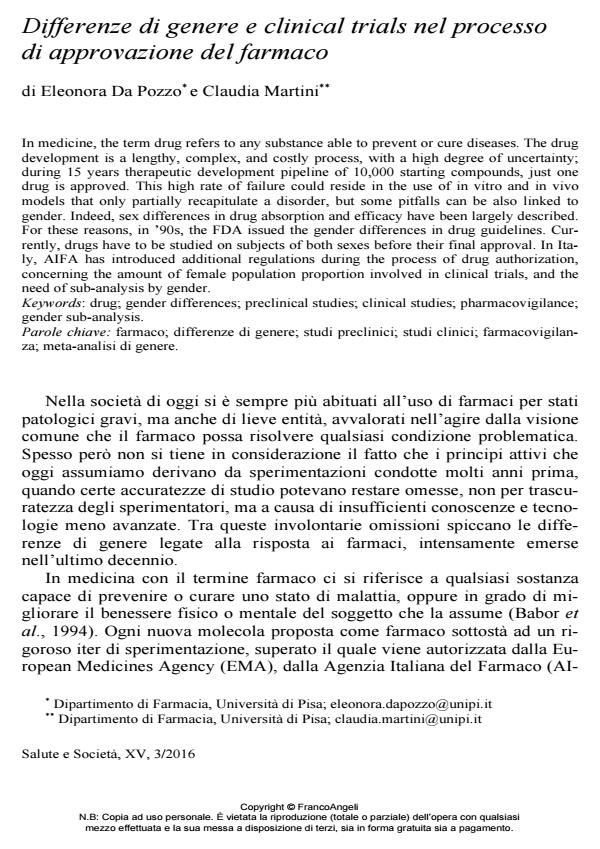Differenze di genere e clinical trials nel processo di approvazione del farmaco
Titolo Rivista SALUTE E SOCIETÀ
Autori/Curatori Eleonora Da Pozzo, Claudia Martini
Anno di pubblicazione 2016 Fascicolo 2016/3
Lingua Italiano Numero pagine 9 P. 134-142 Dimensione file 47 KB
DOI 10.3280/SES2016-003011
Il DOI è il codice a barre della proprietà intellettuale: per saperne di più
clicca qui
Qui sotto puoi vedere in anteprima la prima pagina di questo articolo.
Se questo articolo ti interessa, lo puoi acquistare (e scaricare in formato pdf) seguendo le facili indicazioni per acquistare il download credit. Acquista Download Credits per scaricare questo Articolo in formato PDF

FrancoAngeli è membro della Publishers International Linking Association, Inc (PILA)associazione indipendente e non profit per facilitare (attraverso i servizi tecnologici implementati da CrossRef.org) l’accesso degli studiosi ai contenuti digitali nelle pubblicazioni professionali e scientifiche
In medicine, the term drug refers to any substance able to prevent or cure diseases. The drug development is a lengthy, complex, and costly process, with a high degree of uncertainty; during 15 years therapeutic development pipeline of 10,000 starting compounds, just one drug is approved. This high rate of failure could reside in the use of in vitro and in vivo models that only partially recapitulate a disorder, but some pitfalls can be also linked to gender. Indeed, sex differences in drug absorption and efficacy have been largely described. For these reasons, in ’90s, the FDA issued the gender differences in drug guidelines. Currently, drugs have to be studied on subjects of both sexes before their final approval. In Italy, AIFA has introduced additional regulations during the process of drug authorization, concerning the amount of female population proportion involved in clinical trials, and the need of sub-analysis by gender.
Parole chiave:Farmaco; differenze di genere; studi preclinici; studi clinici; farmacovigilanza; meta-analisi di genere
Eleonora Da Pozzo, Claudia Martini, Differenze di genere e clinical trials nel processo di approvazione del farmaco in "SALUTE E SOCIETÀ" 3/2016, pp 134-142, DOI: 10.3280/SES2016-003011